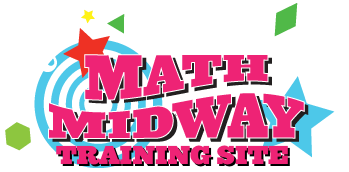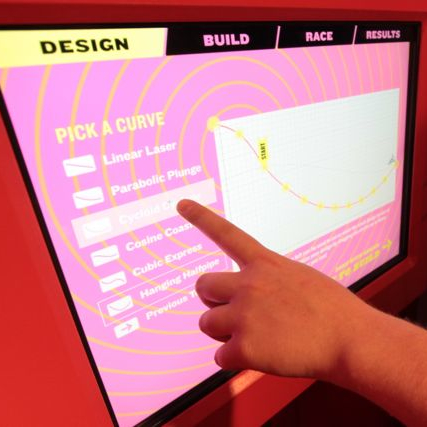Scroll down to see full description and guide.
The Roller Graphicoaster has a flexible track supported by struts that can be raised and lowered. There is a large flat screen directly behind the track that can display different curves for the participant to match. The participant gets to choose what shape to make the roller graphicoaster, first by designing the curve on the computer screen, then adjusting the struts to match the projected image of the design. Once the track shape is set, the participant sends a car down the track. The computer times the car's path and displays the result, comparing it to a list of the fastest times so far.
The projected curves include a straight line, a parabola, a catenary, a cosine, a cubic, and a cycloid. A cycloid is the curve you get by tracing the path of a single point on the rim of a rolling wheel. The cycloid track results in the shortest time for the car to reach the end. (The proof of this result is a difficult task involving calculus of variations.) Finding the fastest curve is called the "Brachistochrone" Problem (from the Greek for "short time"), so the cycloid curve which solves this problem is also called "the brachistochrone."
The timing begins as soon as a visitor presses the button to release the car. A sensor at the end of the track stops the timer.



